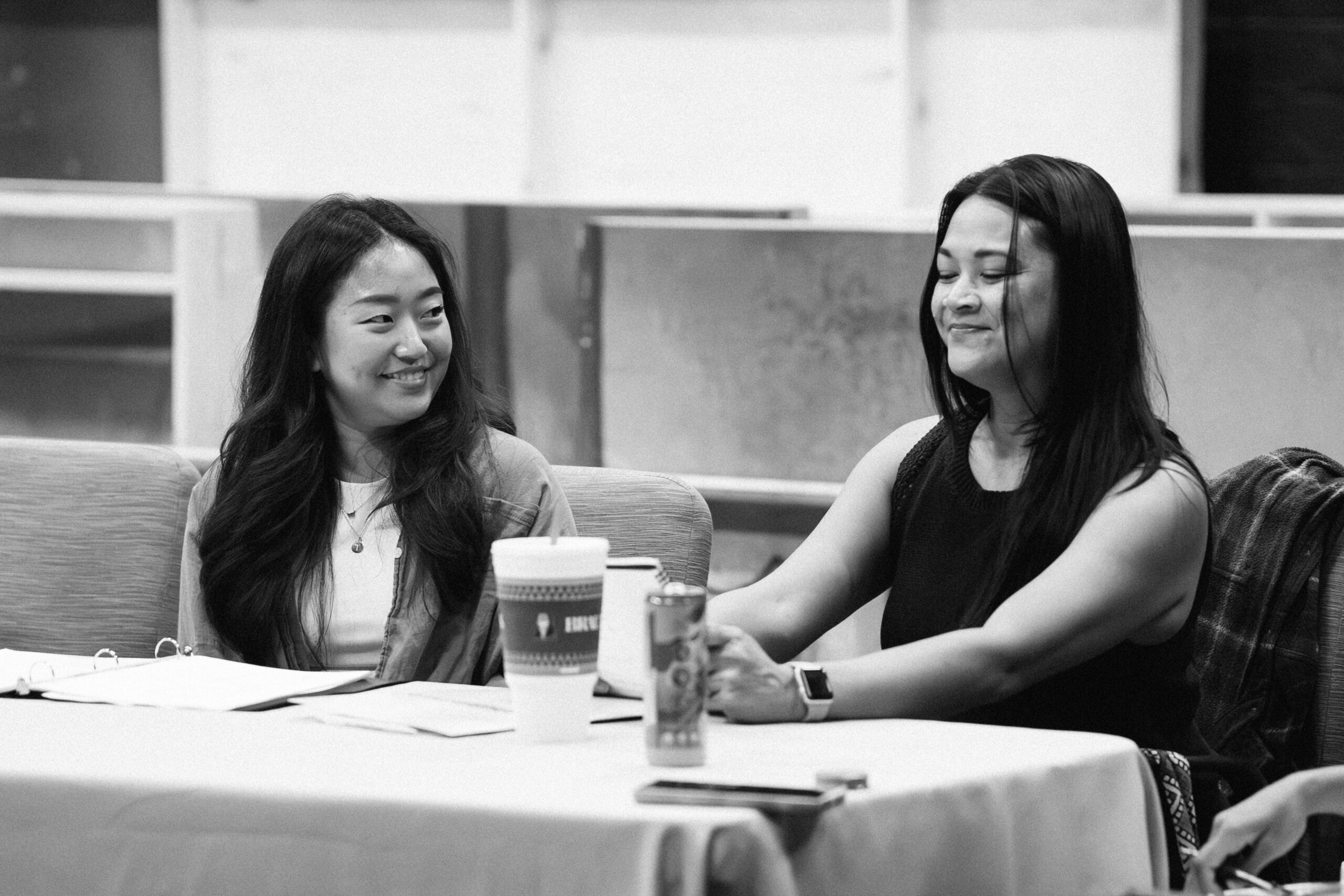Originally published on Onstage NTX
There’s a growing trend towards putting sci-fi onstage these days; shows like Qui Nguyen’s She Kills Monsters; Anne Washburn’s Mr. Burns, a post-electric play; Joe Tracz’s Be More Chill—all using the trappings of sci-fi to explore the very human stories at their center.
Leegrid Stevens’ Spaceman at Amphibian Stage, produced for only the second time since its initial off-Broadway run in 2019, takes a common scenario—isolation, and the reaction to it over time—and heightens it by placing it an extraordinary context: space. What results is an ambitious piece of work exploring loneliness, grief, ambition, religion, capitalism, and a lot more. Although the show is, essentially, a one-person piece, star Sarah Rutan’s gritty, unglamorous performance (a true endurance test for an actor) is enhanced by a fantastic creative team, whose work creates a totally immersive experience of space travel that kept the Saturday-night audience riveted.
Commander Molly Jennis (Rutan) is, by any definition, an accomplished woman: scientist, star athlete, now astronaut. Combine these achievements with the death of Molly’s husband on a previous mission to Mars, and you’ve got the perfect star for NASA’s own corporate-funded space reality show—which, honestly, feels uncomfortably plausible right about now. Molly’s the only member of a mission to Mars, with the idea that she’ll be founding a colony upon her arrival.
The trials and tribulations of her eight-month mission are being beamed, almost in real time, back to Earth, with an increasingly frazzled Molly (we meet her in month seven of the mission) desperately trying to cling to sanity while fielding notes from corporate sponsors about her “likability,” answering questions on whether she’ll be meeting God on her mission, and dabbing on lipstick to be “camera ready” for interviews. All this while sweltering in a space suit that reeks of poo.
“Drawn and pale, Rutan plays Molly as simultaneously exhausted and restless, practically clawing the walls to get to her destination, and to get as far away from Earth as possible, willing (to a point) to put up with the nonsense of ratings and interview questions to get to her goal. Impressively, the weightlessness of the character, which Rutan carefully underplays herself…”
Her only “companions” on the mission are a plant, dubbed Sip, and the capsule’s AI, named Jim, who isn’t really capable of much in the way of independent thought. The cracks in Molly’s façade are starting to show, and her desperation to reach Mars at all costs (perhaps out of an insane hope of seeing her husband again) push her to make decisions for the mission that may have dire consequences.
It’s a tall order to hold an audience’s attention for nearly two hours on your own, and I won’t say Rutan makes it look easy, because hat would be an insult to the emotional marathon she’s running, show after show. Girl’s working, HARD. She and director Jay Duffer make you feel every agonizing, terrifying, aggravating, so-boring-you-want-to-pull-your-hair-out moment for Molly, swinging from emotional pole to pole without missing a beat, and taking the character toward madness so gradually that she’s at the cliff’s edge before you even register the danger.
Drawn and pale, Rutan plays Molly as simultaneously exhausted and restless, practically clawing the walls to get to her destination, and to get as far away from Earth as possible, willing (to a point) to put up with the nonsense of ratings and interview questions to get to her goal. Impressively, the weightlessness of the character, which Rutan carefully underplays herself, and which the production winks at by having puppeteers manipulate objects on sticks to simulate floating, never reads as silly or cartoonish, unless deliberately made to look that way.
The set (credited to scenic designer Jeff Stanfield) manages to be at times comforting and at other moments claustrophobic—from womb to tomb, if you will. The walls of Molly’s capsule, lit around the edges, are a series of gradually shrinking circles, with a final lit circle—almost a halo—forming the viewscreen outside (in space) behind Molly’s chair. Eschewing some of the complications of the show’s original set (lots and lots of buttons, panels, and general doodad-ery), Stanfield has streamlined the technical aspects to keep the focus on mood—which, in conjunction with the show’s lighting and sound design, is extremely effective.
Oftentimes the mark of a good lighting or sound design is how little you notice it—not the case here. Frequent Amphibian collaborator David Lanza (sound designer) and Jason Monmaney (lighting designer) have a herculean task with Spaceman, which requires almost endless and perfectly coordinated cues to match the action onstage. The seamlessness of the technical elements is a testament to the talented team Amphibian pulled together for this piece—not one beat was missed on the night reviewed. This was especially apparent in the show’s final scenes, where (no spoilers) the action becomes somewhat less tethered to objective reality, and the lighting becomes almost a character in and of itself. Amphibian billed this piece as “a full-sensory, surround-sound expedition into outer space,” and I’m pleased to report, they deliver.
Spaceman takes big swings at big questions. I’d say I had more questions than answers by the end, but as in the show itself, it’s more about the journey than the destination. You won’t regret coming along with Amphibian Stage for this ride.



